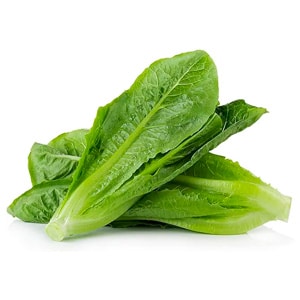Romaine Lettuce
Welcome to our dedicated space for Romaine lettuce lovers! Here, you’ll discover everything you need to know about this crunchy, nutritious green. Dive into our quick facts for a snapshot of its nutritional benefits and common culinary uses, or explore our featured sections on health benefits, delicious recipes, and expert growing tips to make the most out of Romaine in your kitchen and garden.
Romaine Lettuce – A Staple in Salads and Sandwiches
Romaine lettuce, known for its tall, dark green leaves and sturdy texture, has been a staple in salads and dishes for centuries. Originating from the Mediterranean region, this lettuce variety boasts a rich history. Explore the different types of Romaine lettuce, from the crisp classic to the red-tinged leaves, and learn about its impressive nutritional profile, including its low calorie count and high vitamin content.

Romaine lettuce is crisp and refreshing, making sandwiches and salads simply delicious. Nothing beats the fresh, crisp taste of romaine.
Health Benefits or Romaine
Romaine lettuce is more than just a salad ingredient; it’s a powerhouse of vitamins A and K, essential minerals like iron and magnesium, and dietary fiber. These nutrients contribute to improved vision, stronger bones, and a robust immune system. We’ll also compare Romaine’s nutritional benefits to other greens, highlighting why it’s a smart choice for a healthy diet.
Growing Romaine
Whether you’re a seasoned gardener or a beginner, growing Romaine lettuce can be rewarding. This section provides detailed guidance on how to plant, care for, and harvest Romaine. We cover everything from soil preferences to watering techniques, and address common challenges like pests and diseases to help you grow healthy and productive plants.
Romaine Recipes
Transform Romaine lettuce into something extraordinary with our collection of recipes. Whether you’re looking for a traditional Caesar salad or want to try grilling Romaine for a smoky flavor, our recipes section has something for every taste. We also include quick, easy snacks that make use of Romaine’s crisp texture and mild flavor to satisfy your cravings healthily.
Romaine Sustainability
Learn about the environmental impacts of cultivating Romaine lettuce and how you can adopt more sustainable gardening practices. This section discusses the ecological benefits of growing Romaine, such as water efficiency and the potential for reducing your carbon footprint. We also explore how incorporating Romaine into your diet can contribute to a more sustainable food system.
The History of Romaine Lettuce
Romaine lettuce, scientifically known as Lactuca sativa var. longifolia, is renowned for its crunchy texture, elongated leaves, and a robust flavor that has made it a favorite among salad lovers worldwide. This article delves into the fascinating journey of Romaine lettuce from its ancient origins to its status as a culinary staple in contemporary cuisine.
Origins of Romaine in the Ancient World
The story of Romaine lettuce begins in the Eastern Mediterranean and Middle East, where it was first cultivated thousands of years ago. Historical evidence suggests that Romaine, like other forms of lettuce, originated from wild lettuce, which was known for its bitter leaves and medicinal properties. Ancient Egyptians first cultivated lettuce not for food but for the production of oil from its seeds. However, they soon began to select varieties with less bitter, more palatable leaves, giving rise to the early forms of Romaine.
Frescoes in ancient Egyptian tombs, dating as far back as 4500 BCE, depict lettuce with characteristics similar to modern Romaine. These images not only highlight the plant’s significance in their diet but also its role in religious ceremonies, symbolizing fertility due to its rapid seed production.
Romaine Cultivation and Spread
As trade routes expanded, Romaine lettuce found its way from Egypt to the ancient Greeks and Romans. The Romans, in particular, were significant in the spread and enhancement of Romaine. They named it “lactuca” from “lac,” the Latin word for milk, referring to the white sap that leaks from cut stems, thought to have health benefits including sleep induction.
Pliny the Elder, a Roman naturalist, documented several types of lettuce in his encyclopedic work Natural History, attesting to the variety’s popularity and cultivation methods during the Roman era. Romaine lettuce was not only consumed fresh but also often braised or cooked, a testament to its versatility that is somewhat overlooked in modern culinary practices.
Middle Ages to the Renaissance
After the fall of the Roman Empire, the cultivation of Romaine lettuce spread throughout Europe. Monastic gardens played a crucial role in preserving horticultural knowledge and practices, including the cultivation of Romaine, during the Middle Ages. By the Renaissance, it was a common sight in kitchen gardens across Europe, and botanical works from the period often featured the lettuce, noting its varieties and culinary uses.
Romaine Lettuce in the New World
European settlers brought Romaine lettuce to the New World in the 16th and 17th centuries. It adapted well to various climates, becoming a staple in North American gardens. In the United States, Romaine became particularly popular in the 20th century, valued for its nutritional content and role in the iconic Caesar salad, which was invented in the 1920s by Italian-American restaurateur Caesar Cardini in Tijuana, Mexico.
Modern Cultivation and Genetic Improvement
Today, Romaine lettuce is cultivated globally, thriving in temperate and subtropical climates. Advances in agricultural science have led to the development of new varieties that are more disease-resistant, have improved shelf life, and maintain nutritional quality. Hydroponic systems have also allowed for the year-round, pesticide-free production of Romaine lettuce, which continues to grow in popularity.
Conclusion From its ancient origins as a medicinal plant to a staple in both raw and cooked forms, Romaine lettuce has a rich history that mirrors the evolution of human agriculture and culinary trends. Its journey from the banks of the Nile to global prominence is a testament to its enduring appeal and versatility, securing its place at our tables for millennia to come.
